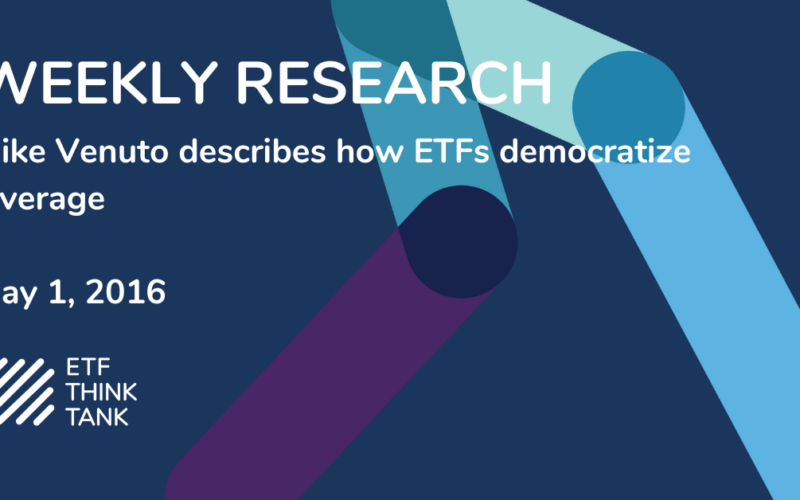Despite the fact that the S&P 500 ended slightly positive for the first quarter, the experience for investors concentrated in US equities, so far this year has been quite tumultuous.
As of January 20th the S&P 500 was down 9% and then recovered. By February 11th the S&P 500 had again declined by more than 10% only to recover dramatically over the next 20 days and end the quarter up 0.81%. Thus, even though the end result has been meagerly positive, the roller coaster ride may have caused some investors to opt out and miss the recoveries.
Believe or not, this Time is Different
The seesaw returns of the first quarter 2016 seem quite reminiscent of the August 2015 decline and rapid recovery in October. However, the four most dangerous words in investing are “this time is different”. Yet, we dare to say that this time is different for two reasons:
- The Federal Reserve will not provide any more stimulus; at best they can only temper the pace of rate increases.
- This time diversification worked; commodities like gold were inversely correlated to the market decline and maintained the gains during the equity market recovery.
The key here is that investors should not extrapolate the recovery in March as an indication of sanguine markets in 2016. Instead, the volatility that we anticipate for the remainder of the year highlights the need for diversification. We also believe that that a focus on fundamentals will be rewarded.
Procrastination is not Stimulus
Over the past few years the market has often rallied because the Federal Reserve signaled that they would not raise rates and delayed starting a period of quantitative tightening.
Clearly procrastination on tightening is not the same as providing fuel to the economy. Rate increases are intended to temper both growth and combat inflation; the delay is, at best, an acknowledgement of tepid growth, but not a way to promote economic expansion. We maintain our position that the economy is in decent shape but the US Equity market is overvalued. A dovish Federal Reserve will not be enough to mitigate future volatility.
For many, the market rally of this past March was due to a general sense of an oversold market. However, the more likely reason why it happened was the overall belief that current volatility would delay the next increase in rates.
Finally, diversification worked!
In previous commentaries, we have noted that diversification has detracted from returns during the past few years. Further, we have contended that the markets have been irrational and essentially drunk on artificial stimulus. Although the declines in the US Equity markets during the first six weeks of 2016 seem to support these statements, the rapid recovery in the following six weeks appear counterintuitive.
The major difference with the first quarter experience and the irrational returns of previous years is that this time diversification worked. Asset classes like commodities and fixed income provided protection during decline but did not substantially detract during the recovery.
For example, consider that as of April 15 the year-to-date return for the SPDR S&P 500 ETF (Ticker: SPY) was +2.47% and the 3-month return was 11.30%, meaning there was a -8.83% loss in the first 15 days of the year followed by the nice return. And then for SPDR Gold Shares (Ticker: GLD) was at +15.39% for the year and 12.08% for the 3-month period ending April 15, providing a +3.31% return in the first 15 days. Even though there is only 15 days’ difference in the time periods being measured, the return pattern confirms that GLD helped to minimize a portfolio loss during a severe equity market downturn during first part of the year and did not deteriorate when the equity market rebounded.
Why We Diversify
Diversification is the simplest form of volatility control. As noted in previous commentaries, volatility can erode returns even if the overall market trend is positive. Investing across various asset classes, geographies, market caps and even factors should provide superior returns over time. The key driver of successful diversification is having a portion of one’s portfolio maintaining the purchasing power of the portfolio in times of distress. Fixed income, for example, can provide a source of stable principal from which to reallocate and compound returns during a recovery.
The most common form of diversification is constructed on asset allocation models rooted in Modern Portfolio Theory (MPT). The core of MPT is based on blending the optimal risk and reward of multiple assets to create a portfolio consistent with one’s risk tolerance. The MPT process seeks to diversify assets to the ideal return per unit of risk, but many investors forget that this method generally assumes an extended time horizon of 30 to 40 years.
Goals-based diversification!!
A second and less discussed benefit of diversification is the client experience. Many studies show that investors tend to buy high and sell low, which is emotional reaction rather than a sound investment choice. Volatile markets foster emotional decisions to exit the markets at exactly the wrong time.
To counteract this tendency, we believe investors should diversify their time horizon as well. If all of one’s assets were allocated within a plan that takes 40 years to work, it is easy to see how in times of distress that investor’s faith would be tested. A goals-based approach, which acknowledges an investor’s true time horizon is our preferred way to enhance the investor experience and ensure their participation in market returns.
We separate Goals Based Investing into three categories:
- Wealth Preservation: Time Horizon 5 years +
- Targeted Income 5%: Time Horizon 10 years +
- Growth: Time Horizon 20 years +
These three outcomes can be combined to create a glide path through retirement as depicted in the chart below:

Our process is intended to provide investors with a positive experience as they participate in the growth of the markets. We believe that investors with extended time horizons should focus on growth. Accumulated profits should, over time, build a base of wealth preservation as retirement age is achieved. Then, through retirement, the wealth preservation assets convert to income producing strategies. So, how was this experience in our goals-based strategies for the first quarter of 2016?
Wealth Preservation
The diversified asset allocation strategy behind our core wealth preservation strategy is based on the permanent portfolio philosophy. This asset allocation philosophy has been around for 40 years and has produced average annualized returns around 8% with a third of the volatility of the S&P 500. The portfolio employs four different asset classes, designed to offset the volatility of each other and compound the upside potential of each component: Equities, Bonds, Gold and Cash. The portfolio is performing well in 2016; our core strategy is up 3.57% net of fees for the first quarter. This year bonds and gold are helping to counteract the extreme volatility of equities.
Income
In our Target Income 5% strategy we combine high yielding ETFs with low risk cash alternatives ETFs. This income “bar-bell” provides lower volatility than traditional bond laddering or blending. Our approach is significantly more diversified; we combine high income ETFs proportionally with low risk funds like the iShares Short-term Treasury ETF (SHY) to target a 5% distribution. Today, our Target Income strategy yields 5.1% while maintaining 48% in low risk ETFs and cash alternatives. The combination of diversification and high percentage of low risk ETFs is how we mitigate volatility. As of March 31st the total return for this strategy was 1.52% net of fees.
Growth
We manage two core growth strategies; the first is our Sector Opportunity portfolio, which combines an 80% allocation to US equity sectors with a volatility ETF overlay. In this portfolio we seek growth through the equity exposure but protect the assets with the volatility overlay. This strategy significantly outperformed the S&P 500 during January and February with substantially less volatility, but underperformed during the recovery in March because of the drag from the protective overlay. The return for the first quarter was -1.66% but since its inception in June of 2013 the strategy’s annualized return net of fees has been 12.3%.
In our second growth strategy, Global Alpha, we build a global portfolio focused on high active share. The intent is to not only diversify through geography and market, but also seek out factors and business characteristics that should enhance returns. Unfortunately, thus far the strategy has failed to provide alpha in an irrational market that has rewarded concentration and momentum rather than diversification and fundamentals. For the first quarter the Global Alpha Strategy returned -1.7% net of fees.
A Healthy Dose of Reality
The first quarter of 2016 began with a roar and ended with a whimper.
We urge investors not to become complacent and expect the good times to persist. Without artificial stimulus the US equity markets will likely experience extreme volatility this year.
The premise of our asset allocation process is to combine three outcomes: wealth preservation, growth, and income. We believe investors should allocate essential money only to wealth preservation strategies. Non-essential money should be allocated to growth strategies. Finally, investors should use income strategies in the distribution phase of their life. Through a diversified goals-based approach we seek to improve the investor experience and foster continuous participation in the potential future growth.

The average of four stocks: Facebook (ticker: FB), Amazon (ticker: AMZN), Netflix (ticker: NFLX) and Google (ticker: GOOGL)
** The Toroso Neutral Index is comprised of four equal weighted ETFs; Vanguard Total Stock Market ETF (VTI), iShares Core US Aggregate Bond ETF (AGG), iShares 1-3 Year Treasury Bond ETF (SHY), and SPDR® Gold Shares (GLD).
Source: Morningstar Direct
Disclaimer — This commentary is distributed for informational and educational purposes only and is not intended to constitute legal, tax, accounting or investment advice. Nothing in this commentary constitutes an offer to sell or a solicitation of an offer to buy any security or service and any securities discussed are presented for illustration purposes only. It should not be assumed that any securities discussed herein were or will prove to be profitable, or that investment recommendations made by Toroso Investments, LLC will be profitable or will equal the investment performance of any securities discussed. Furthermore, investments or strategies discussed may not be suitable for all investors and nothing herein should be considered a recommendation to purchase or sell any particular security. Investors should make their own investment decisions based on their specific investment objectives and financial circumstances and are encouraged to seek professional advice before making any decisions. While Toroso Investments, LLC has gathered the information presented from sources that it believes to be reliable, Toroso cannot guarantee the accuracy or completeness of the information presented and the information presented should not be relied upon as such. Any opinions expressed in this commentary are Toroso’s current opinions and do not reflect the opinions of any affiliates. Furthermore, all opinions are current only as of the time made and are subject to change without notice. Toroso does not have any obligation to provide revised opinions in the event of changed circumstances. All investment strategies and investments involve risk of loss and nothing within this commentary should be construed as a guarantee of any specific outcome or profit. Securities discussed in this commentary and the accompanying chart, if any, were selected for presentation because they serve as relevant examples of the respective points being made throughout the commentary. Some, but not all, of the securities presented are currently or were previously held in advisory client accounts of Toroso and the securities presented do not represent all of the securities previously or currently purchased, sold or recommended to Toroso’s advisory clients. Upon request, Toroso will furnish a list of all recommendations made by Toroso within the immediately preceding period of one year.












